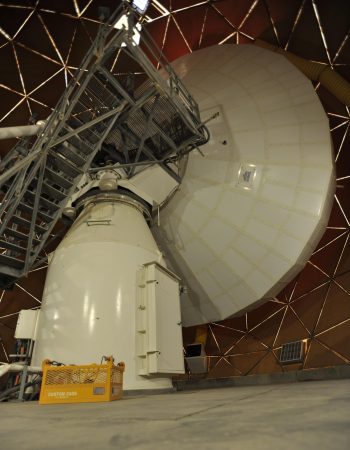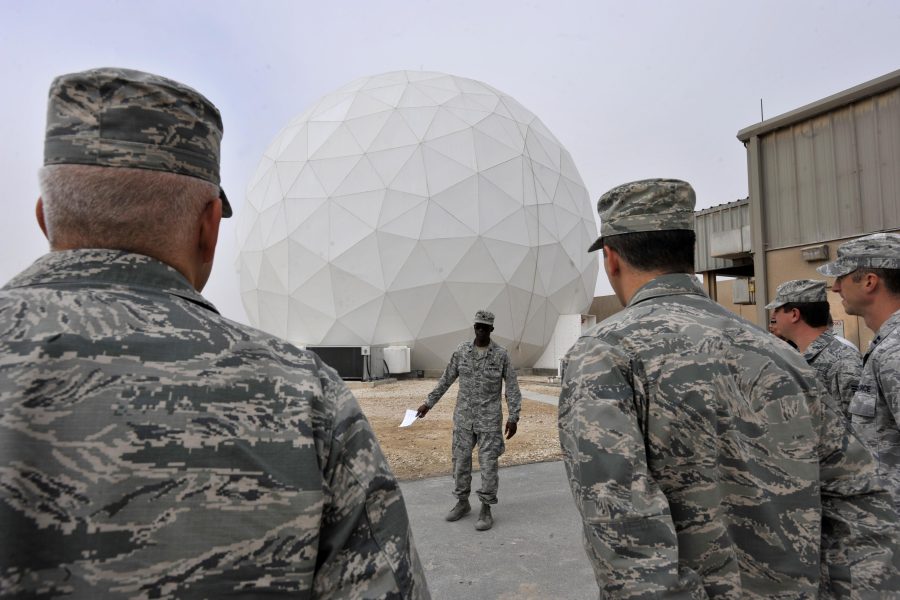A ballistic missile struck Al Udeid Air Base in Qatar during Iran’s attack on the base June 23, the Pentagon told Air & Space Forces Magazine July 11.
After Iran attacked the base, the U.S. military’s largest in the Middle East, Defense officials touted the success of U.S. and Qatari Patriot anti-missile systems in blunting the missile attack. But until now, the Pentagon has not acknowledged that a missile got through and damaged the base.
“One Iranian ballistic missile impacted Al Udeid Air Base June 23 while the remainder of the missiles were intercepted by U.S. and Qatari air defense systems,” Pentagon chief spokesman Sean Parnell said in a statement to Air & Space Forces Magazine.
“The impact did minimal damage to equipment and structures on the base,” Parnell added. “There were no injuries. Al Udeid Air Base remains fully operational and capable of conducting its mission, alongside our Qatari partners, to provide security and stability in the region.”
Iran’s salvo of short-range and medium-range ballistic missiles followed U.S. military strikes on three of Iran’s nuclear sites the previous day.
Commercial satellite imagery, first reported this week by Iran International, a news outlet based in London, shows damage to a radome at the site after the attack.
The damage appears to have destroyed a radome that housed the modernization enterprise terminal (MET), a $15 million communications suite.
The MET “provides secure communication capabilities including voice, video and data services, linking service members in the U.S. Central Command area of responsibility with military leaders around the world,” the Air Force said in a 2016 release.

U.S. Central Command, which oversees U.S. forces in the region, reported in June that it had “successfully defended against the attack.”
But in a Pentagon briefing on June 26, Chairman of the Joint Chiefs of Staff Air Force Gen. Dan Caine said there were “reports of something getting through.”
The base, which is normally defended by American and Qatari Patriot batteries, received additional U.S. Patriot systems that were relocated from Japan and Korea in advance of the attack.
In a post on Truth Social on June 23, President Donald Trump wrote that 13 missiles were intercepted and one missile was “set free” because it was not deemed a threat. “I am pleased to report that, in addition to no Americans being killed or wounded, very importantly, there have also been no Qataris killed or wounded,” Trump stated.
Trump added that the attack was “very weak.”
Caine offered a more detailed account in his briefing. “What we do know is there was a lot of metal flying around,” Caine said. “Between attacking missiles being hit by Patriots, boosters from attacking missiles being hit by Patriots, the Patriots themselves flying around and the debris from those Patriots hitting the ground, there was a lot of metal flying around, and yet our U.S. air defenders had only seconds to make complex decisions with strategic impact,” Caine said.
U.S. officials told Air & Space Forces Magazine they were not aware of significant damage to the base.
U.S. Air Force B-2 bombers and submarine-launched cruise missiles struck the three sites in the early hours of June 22, local time: the Fordow, Natanz, and Isfahan facilities. Six B-2s dropped 12 GBU-57 Massive Ordnance Penetrators (MOPs) on Fordow, and one B-2 dropped two MOPs on Natanz. Submarine-launched Tomahawk land-attack cruise missiles were launched at Isfahan. Iran vowed to retaliate,warned Qatar in advance that it was going to attack Al Udeid, according to media reports.
The sprawling air base is a joint U.S.-Qatari facility that is not only the largest and most important U.S. base in the Middle East, but also hosts the forward headquarters of U.S. Central Command and U.S. Air Forces Central. It is home to CENCTOM’s Combined Air Operations Center, the command center for airpower in the region. Al Udeid typically houses approximately 10,000 military and civilian personnel. Iranian missiles, either fired directly from Iran or its proxy forces, have been a persistent concern for U.S. forces over the years, and Qatar is located directly across the Persian Gulf from Iran.
The U.S. had taken steps to mitigate potential damage should Iran or its proxy forces attack U.S. forces in the region, moving most planes away from the base and evacuating it during the attack.
“Most folks had moved off the base to extend the security perimeter out away from what we assessed might be a target zone, except for a very few Army soldiers at Al Udeid,” Caine said. “At that point, only two Patriot batteries remained on base, roughly 44 American soldiers responsible for defending the entire base, to include CENTCOM’s forward headquarters in the Middle East, an entire air base, and all the U.S. forces there.”
